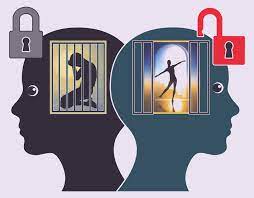Somatic Experiencing (SE) is a new approach to trauma therapy that uses the body’s natural resources. SE was developed by Dr. Peter Levine, who has been studying and practicing psychology for more than 50 years. He noticed that many people who experienced a traumatic event did not get a chance to process it before living through another life-threatening situation. This led him to develop a form of therapy where he could help people explore their past experiences to get rid of them. In this article, we will explore how Somatic Experiencing can be used as an effective treatment for PTSD and other anxiety disorders.
Contents
Meaning Of Somatic Experiencing

Somatic Experiencing (SE) is a trauma therapy technique that utilizes the body’s natural resources. Dr. Peter Levine, a psychologist who has been studying and practicing psychology for more than 50 years, created SE. He observed that many individuals who had a distressing experience were never able to process it before being thrust into another potentially deadly scenario again. Do you have bad memories? Somatic Experiencing is a therapy that can help. It helps people explore their past experiences to get rid of them. This article will show you how it works for PTSD and other anxiety disorders.
The Freeze Response

When people experience a traumatic event, their body goes into a “freeze response”. This is a natural defense mechanism that helps protect them from harm. The freeze response occurs when the brain perceives danger and sends signals to the muscles to stop moving. This can help prevent people from being injured or killed. The problem is that sometimes this response gets stuck and people find themselves in a state of frozen terror long after the danger has passed.
This is where Somatic Experiencing can help. SE helps people release the freeze response by exploring the memories that triggered it. This allows them to process the experience and move on.
How does SE work?

In SE, the therapist works with the client to help them explore their memories of the traumatic event. The therapist will ask questions and guide the client, but then they can also explore on their own. By doing this, the client can begin to understand what happened and why it was traumatic.
The therapist will also help the client to release the freeze response. This can be done by gently tapping on the muscles and providing encouragement. The goal is to allow the client to feel safe enough to experience their emotions fully. This can be a difficult process, but it is ultimately very rewarding.
SE is an effective treatment for PTSD and other anxiety disorders. It is a safe and supportive way for people to explore their memories. It also helps them to get over the freeze response so they can move on with their lives. If you or someone you know is struggling with trauma, SE may be the right choice for you. For more information, please contact your nearest therapist today!
Uses Of Somatic Experiencing
Somatic Experiencing is an effective treatment for several conditions, including:
- PTSD: Somatic Experiencing is an effective treatment for PTSD because it helps people process their past traumas. This can result in resolution of the condition and improved functioning.
- Anxiety Disorders: SE is helpful for people with anxiety problems. This includes social phobia, panic disorder, OCD, and more.
- Depression: It may also help improve symptoms of depression that are associated with PTSD or other trauma. Somatic Experiencing allows people to overcome problems so they can live their lives and not be stuck in negative emotions about what happened.
- Chronic pain: Somatic Experiencing can be helpful for the many people who suffer from chronic pain. This is because it allows people to process the bad things that happened before they became sick. It can also help with stress-related issues, which can make someone’s sickness worse.
- Addiction: In some cases, therapists can help people with addiction. They do this by helping people work through hard things that happened to them as a child or during their teenage years.
- Drug Abuse In addition, if an addict has PTSD related specifically to drug use (e.g., needle phobia), Somatic Experiencing has shown itself to significantly reduce the anxiety associated with exposure therapy – used in traditional treatment plans for this type of disorder – increasing its effectiveness dramatically!
- Fibromyalgia: People who suffer from fibromyalgia can also benefit from SE as it has been shown to reduce the pain associated with this condition. Several studies have found that clients see an average reduction in pain by 50% after only SE treatment!
- Traumatic brain injury: SE can help people process their memories and emotions related to the traumatic event. It also helps them to release the freeze response so they can move on with their lives.
If you are struggling with any of these conditions, please contact your nearest therapist today for more information about SE. You don’t have to suffer anymore!
How SE Is Different From Other Therapies?
Somatic Experiencing is a form of body-based psychotherapy, also known as touch-positive therapy or energy psychology. This type of therapeutic approach focuses on healing relationships with others and improving physical health by working with the mind and the body together.
In traditional counseling approaches, trauma has a treatment through talk therapy only (cognitive processing). This does not solve the problem of a trauma. This does not fix it. It just fixes some parts. It doesn’t fix all of them. These memories continue to affect people in their daily lives.
Somatic Experiencing is different because it works with the “body” to process trauma, memories and emotional responses. It also teaches you how to create new experiences – ones that are positive instead of negative. These techniques help people become more resilient by learning how to effectively deal with life’s challenges both now and in the future!
Considerations While Taking Somatic Experiencing
Somatic Experiencing is a powerful therapy. Some people have experienced trauma. It is effective, but you need to want to try and understand what happened during your experience(s) for it to work.
While some people may find this type of treatment beneficial, others might not want anything more than just talk therapy. If you want to work with someone who is an SE therapist, make sure that they care about your well-being first. They should not be selfish. You can then decide together whether or not Somatic Experiencing will help you achieve your goals!
How To Try It?
If you would like to try Somatic Experiencing, a therapist or counselor must specialize in this type of treatment. You should be able to search for therapists who specialize in SE on the internet and request an appointment from them. It’s best if they get a training specifically in trauma work as well – not just other forms of therapy!
In addition, make sure that your therapist will let you know what techniques they are using when working with you through SE. They should explain everything beforehand so there are no surprises later on down the road (if at all). This way you can feel comfortable knowing what is going on and that you are safe with them.
Somatic Experiencing has gained a lot of popularity in recent years, but it is not for everyone! This type of therapy should only be there if the client wants to try something like this. This is so because SE can help people heal from life’s challenges. It just depends on what types of experiences have shaped your history so far…
Conclusion
In psychology, we talk about “somatic memories,” which are the memories of our bodily sensations. These include emotions and physical feelings that arise in response to a specific memory or stimulus. Some people say that when you have a bad experience, you can remember how it felt by looking at your body. The problem with this type of traumatic event is that memories about it can come back without warning. Memories related to the event may fade over time, but they may return when something triggers them. This is post-traumatic stress disorder (PTSD).
If you are looking for affordable Online Counseling MantraCare can help: Book a trial therapy session



